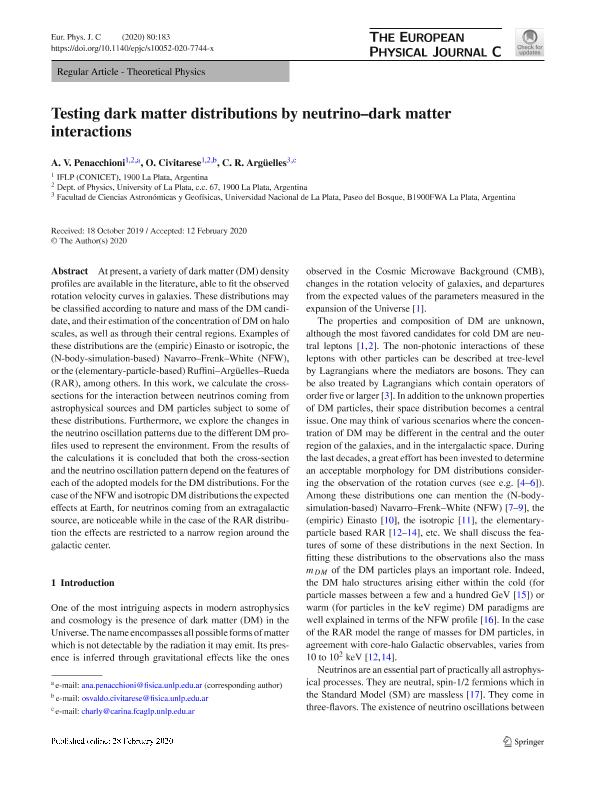Artículo
Testing dark matter distributions by neutrino–dark matter interactions
Fecha de publicación:
03/2020
Editorial:
Springer
Revista:
European Physical Journal C: Particles and Fields
ISSN:
1434-6044
Idioma:
Inglés
Tipo de recurso:
Artículo publicado
Clasificación temática:
Resumen
At present, a variety of dark matter (DM) density profiles are available in the literature, able to fit the observed rotation velocity curves in galaxies. These distributions may be classified according to nature and mass of the DM candidate, and their estimation of the concentration of DM on halo scales, as well as through their central regions. Examples of these distributions are the (empiric) Einasto or isotropic, the (N-body-simulation-based) Navarro–Frenk–White (NFW), or the (elementary-particle-based) Ruffini–Argüelles–Rueda (RAR), among others. In this work, we calculate the cross-sections for the interaction between neutrinos coming from astrophysical sources and DM particles subject to some of these distributions. Furthermore, we explore the changes in the neutrino oscillation patterns due to the different DM profiles used to represent the environment. From the results of the calculations it is concluded that both the cross-section and the neutrino oscillation pattern depend on the features of each of the adopted models for the DM distributions. For the case of the NFW and isotropic DM distributions the expected effects at Earth, for neutrinos coming from an extragalactic source, are noticeable while in the case of the RAR distribution the effects are restricted to a narrow region around the galactic center.
Archivos asociados
Licencia
Identificadores
Colecciones
Articulos(CCT - LA PLATA)
Articulos de CTRO.CIENTIFICO TECNOL.CONICET - LA PLATA
Articulos de CTRO.CIENTIFICO TECNOL.CONICET - LA PLATA
Articulos(IFLP)
Articulos de INST.DE FISICA LA PLATA
Articulos de INST.DE FISICA LA PLATA
Citación
Penacchioni, Ana Virginia; Civitarese, Enrique Osvaldo; Argüelles, Carlos Raúl; Testing dark matter distributions by neutrino–dark matter interactions; Springer; European Physical Journal C: Particles and Fields; 80; 3; 3-2020; 1-7
Compartir
Altmétricas




